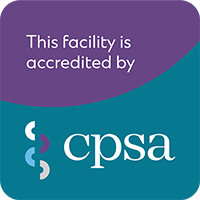The 50th anniversary of the World Congress of Pain is over. A final day of lectures, posters and workshops is complete. What did I learn today?
Internet delivered physiotherapy?
A couple of very informative posters and engaging presenters discussed the challenge of chronic whiplash. Firstly, Peterson and her team presented the results of their recent clinical trial. 140 people were randomized to a) twice weekly in-person physiotherapy incorporating education and supervised exercise or b) internet delivered physiotherapy with exercises, which included 4 in person sessions for education and progression purposes. There was no difference in outcomes, with equal improvement in all outcomes reported – both from a pain and disability perspective, and also functional measurement perspective. Not surprisingly, irrespective of the improvements, approximately 50% of people treated in either group continued to report the presence of moderate to severe disability, although pain improved from 50/100 to 30/100. Further cost effectiveness data is pending. At first glance, the improvements in the internet delivered intervention are non-inferior to the in-person group – so, that is promising from a convenience perspective and likely cost perspective. However, 15 months later, approximately 60 out of the 140 people continued to report presence of moderate to severe disability. And given this was a physiotherapy intervention, no other nociceptive modulation had been performed, suggesting that further improvements may be possible, but without data evaluating the clinical features of each person, this is purely speculation 😉 Which brings me to the next poster.
Updated clinical practice guidelines
Papic and associates from the University of Sydney, which includes the wonderful Trudy Rebbeck have completed clinical practice guidelines for both acute and chronic whiplash associated disorders. This is a huge undertaking. Chris was very generous with his time sharing the recommendations for treatment in the acute through chronic phases. This model does advocate for a stepped care model of treatment, whereby when people do not improve significantly in the acute phase, referral to a specialist physiotherapist to make other recommendations are warranted, with later referral to a multidisciplinary team warranted if improvement is still not occurring. CPGs follow the evidence and can’t make recommendations when evidence doesn’t exist, so this is a thorough process. Work still needs to be performed to determine whether health care practitioners adhere to these guidelines and even when followed, what are the clinical results. Let the evidence continue to shape guidelines to help people get the appropriate care that they deserve.
Socially propagated nocebo!
I’m going to highlight one final presentation – again from Australia. I found this fascinating and scary. Nocebo effects can be socially propagated!!! Nocebo was defined as a hyperalgesic response to a negative education message. Essentially, in people with pain, even when people had not personally experienced a negative response – but they then told another person about the negative experience, that final person demonstrated hyperalgesia to a heat sensitivity experiment. Scary!!! Thankfully, this can be partially (but not fully) attenuated with appropriate education. This shows the importance of providing calm and reassuring advice to PWLE about prognosis, risks and precautions when evaluated or undergoing treatment.
That’s it for 2024 at the World Congress of Pain. It was as good a conference as I have been to. Great lectures, workshops and professional discourse. Genuine people presenting results of research who are humble enough to report that pain is complex and further research is needed. To all those people who took the time to engage me in dialogue and further nourish my curious brain – thank you – and I look forward to revisiting these challenges in 2026 in Thailand.





